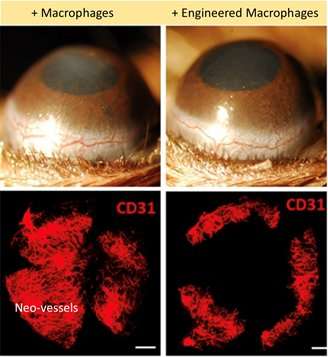Credit: Leiden University
Immune system defends our body against pathogens and cancerous cells, but excessive immunity can in turn lead to tissue damages and diseases. For example, scratching the surface of the eye ignites an immune response that aims at preventing infection but can also lead to edema, angiogenesis and eventually loss of sight. By regulating the balance of pro-inflammatory and anti-inflammatory mechanisms, one may be able to avoid infection and to minimize the risk of self-destruction.
In two recently published papers, Alireza Mashaghi lab at LACDR in collaboration with teams from University of Illinois, University of Wisconsin-Madison, and Harvard Medical School demonstrated that stem cells can regulate innate immunity and can be used as safe and efficient tools to engineer a desired immune response.
In the first study published in a 2018 issue of Stem Cells, it was found that mesenchymal stromal cells from the cornea (cMSCs) therapeutically modulate the inflammatory and angiogenic functions of macrophages. In particular, cMSCs induce macrophage apoptosis and preferentially promote macrophages that secrete high levels of anti‐angiogenic factors. Results of this study show that cMSC modulation of macrophages significantly depends on cMSC secreted pigment epithelium‐derived factor (PEDF).
The second study, published in IOVS last month, was focused on neutrophils, as neutrophil-secreted effector molecules are one of the primary causes of tissue damage during corneal inflammation. In this study, Alireza Mashaghi et al. investigated the effect of stromal cells in regulating neutrophil expression of tissue-damaging enzymes, myeloperoxidase and N-elastase. Bone-marrow derived mesenchymal stromal cells were found to inhibit neutrophil effector functions via direct cell–cell contact interaction during inflammation.
Overall, these results demonstrate that MSCs can be used to therapeutically suppress the functions and engineer the phenotypes of neutrophils and macrophages.
Journal information: Stem Cells
Provided by Leiden University























